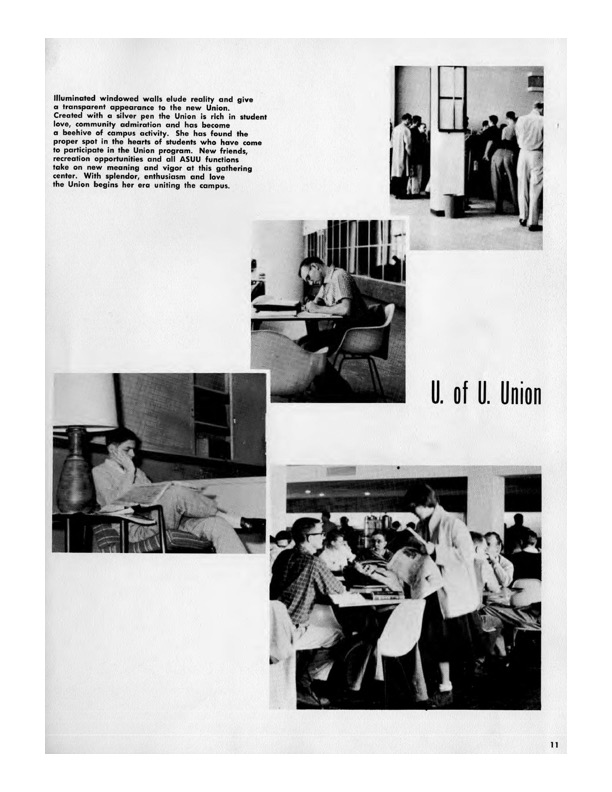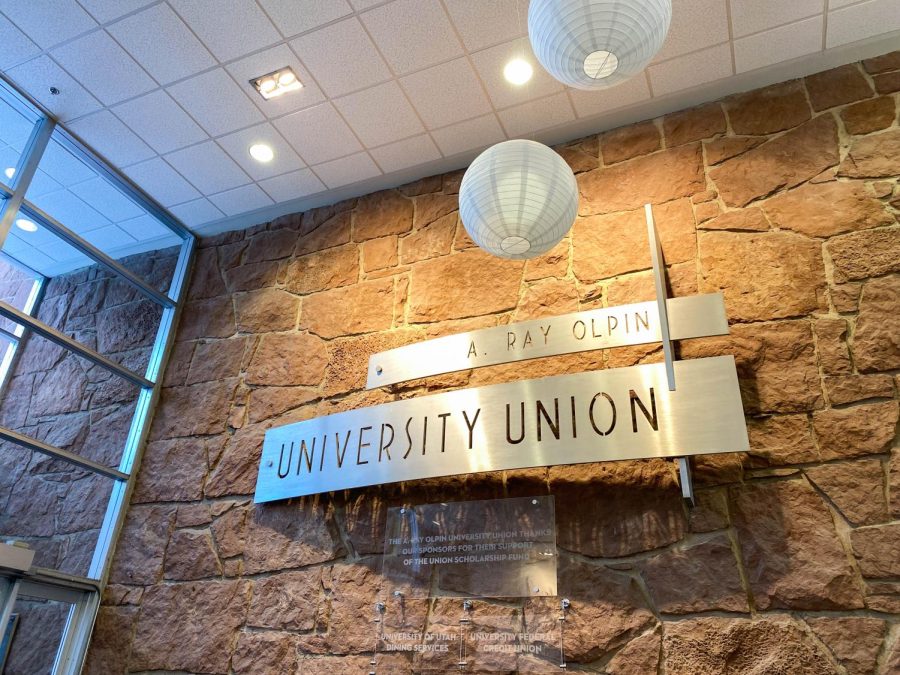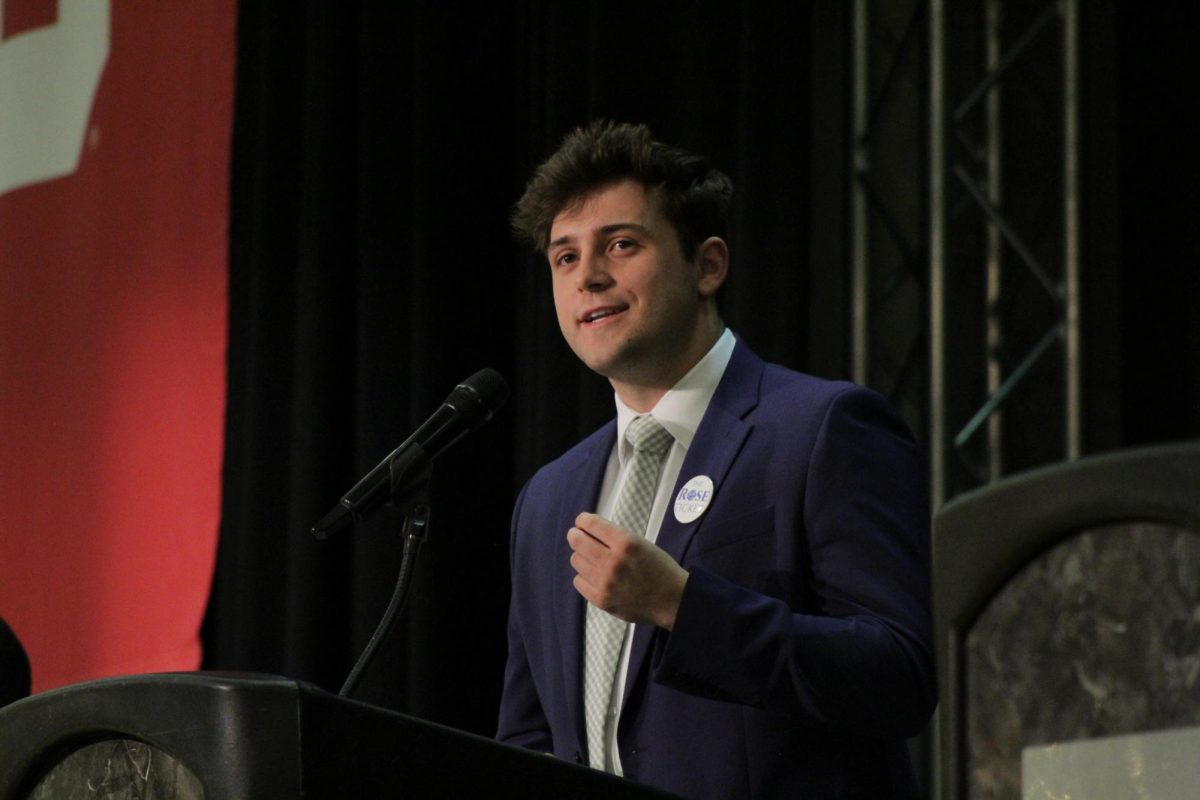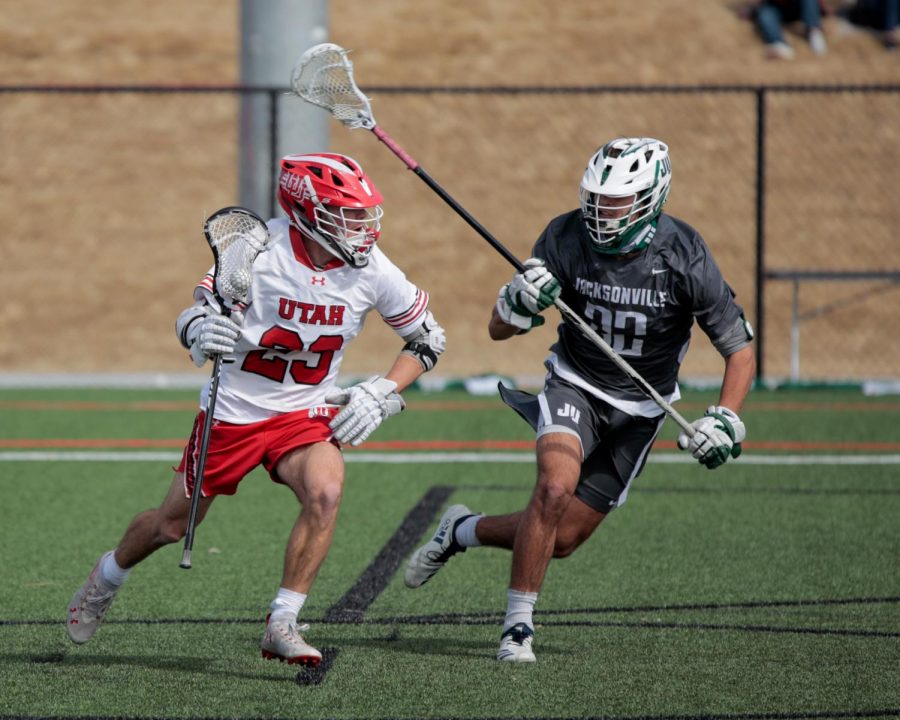The 66-Year History of the A. Ray Olpin Student Union
Plaque inside the A. Ray Olpin University Union at the University of Utah on Saturday Feb. 4, 2023. (Photo by Andrea Oltra | The Daily Utah Chronicle)
February 11, 2023
In 1947, the University of Utah had a problem. The number of students on campus was nearing 10,000, and the student union — then located in Gardner Hall — was being outgrown.
An article published in the Daily Utah Chronicle in October of 1950, titled “Need for New Union Re-emphasized,” stated the “inadequacies of the present Union” including the fact that the building only provided about seven square feet per student, whereas the average student union at the time would provide 12 to 20 square feet.
The U decided to build a new union. It would cost approximately $2.25 million to construct, according to that article.
The Union Across the Years
Branden Dalley, director of the Union, said the construction on the building was finished in 1954, but it wasn’t officially open until 1957 when it was dedicated to Albert Ray Olpin, the president of the university at the time.
The building was financed entirely by student funds, according to another Chronicle article from February 1957.
The article noted that the annual student building fee went from $16 to $20 to help finance the construction. “The increase went unnoticed by students, but it paid for Union Revenue bonds sold on the open market to finance the building,” the article read.
Dalley said as the building has been updated over the years, student input has always been heavily considered.
“It’s the student Union for a reason,” he said. “It’s the one place on campus that students should have a say because it’s their building.”
Even back when the Union was first built, students were involved in the process. A Chronicle article from 1956 titled “Union to Innovate Brass Band Rally” detailed how students could contribute to the Union before its official opening the following year, including meeting with and even joining several Union Building committees in charge of organizing events and activities in the new building.
The article added the students on said committees’ primary responsibilities would be to become “acquainted with the new Union and formulating some plans so that the student body can enter the new Union next September with the student-designed activities in full swing.”
The building has also hosted many notable speakers and performers, such as Dr. Martin Luther King. Jr. and The Grateful Dead. It is no accident that when these guests visit the U, they gravitate toward the Union.
“In the cases where they call us and they say, ‘we want to come to the student Union,’ it’s always because their perception is that it’s the heart of campus,” Dalley said. “It is where we can get directly at the students and for that reason that it is for all students on campus.”

The Union Today
The building has undergone many significant changes throughout the years, including additions to both the east and west wings of the building in 1967, according to Dalley, but it’s also been updated periodically to keep the decor looking modern.
“We want the Union to be the living room of campus, and in order to do that, you do have to replace furniture often, you have to keep it looking nice, you have to keep it looking comfortable for students to come to the facility or else they just won’t want to use it,” Dalley said.
Adryenne Huo, fourth-year marketing major and Crimson Nights director for the Union Programming Council, stressed the importance of having a space on campus where all students can go and feel at home.
“I think it’s important to have that home on campus because, for a lot of people, college is so scary,” she said. She added that the Union provides a place for students to build community more easily and make friends.
“So many people call the Union home from different offices, and that is just a community that you can rely on, that you love,” she said.
Many resource centers have also opened in the Union over the years as the campus community has grown in size and diversity.
“I’ve spent a lot of time in the Union, and there’s so many amazing resources in there; everything you basically need is in there,” Huo said. “It’s housing a lot of different offices to support the diversity of students on campus, which is something that I am extremely grateful for, and I know that many other people are as well.”
Dalley said this centralization of resources on campus is essential.
“With our campus, we’re very geographically spread out in the first place, and the idea behind the Union and the primary mission of the Union is to bring [the] community together.”
Since the idea for the new Union was conceived, Dalley said that has been its goal, and that mission has only become more pertinent as the campus community has diversified.
“It’s become even more important, I would say, over the years, to have that community center as these individual communities are forming across campus,” Dalley said. “And I just want to underscore, it’s important that these sub-communities are existing on campus, but it’s also important to then come together as an entire campus and have those opportunities.”
Huo and her team at UPC work to accomplish this primarily through the many events they hold at the Union. She added that one of the most gratifying parts about her job is seeing the impact that they have on campus with community events.
But now, Dalley said, the campus is outgrowing the building once again.
“The union that we have now is 150,000 square feet or so, and it was built with the idea of 10,000 students on campus,” he said. “Now, all these years later, we’re over 30,000 students on campus.”
66 years later
The 1956 publication of the U’s former yearbook, The Utonian, the last published before the Union’s opening, contains a dedication on its first page.
“To the new Union building,” it reads, “which shall unscreen an invigorating force of unified spirit to every section of the University of Utah’s campus — a dream realized this October, 1956, that was vaguely envisioned nine years ago — the generator of a new stature in growth unifying students, faculty, and alumni. … This, the 1956 edition of the Utonian is respectfully dedicated.”
66 years since the Union was first opened, that force of unified spirit is still as vibrant as ever as students pile in for countless events such as Crimson Nights, the Experimental Series, and new student orientations.
As was written in the 1957 issue of The Utonian in reference to the old Union building, our current Union “will forever remain as a reminder to those who worked and played in its many rooms. The halls will echo with the familiar sounds of work and play that kept the building so completely alive.”













